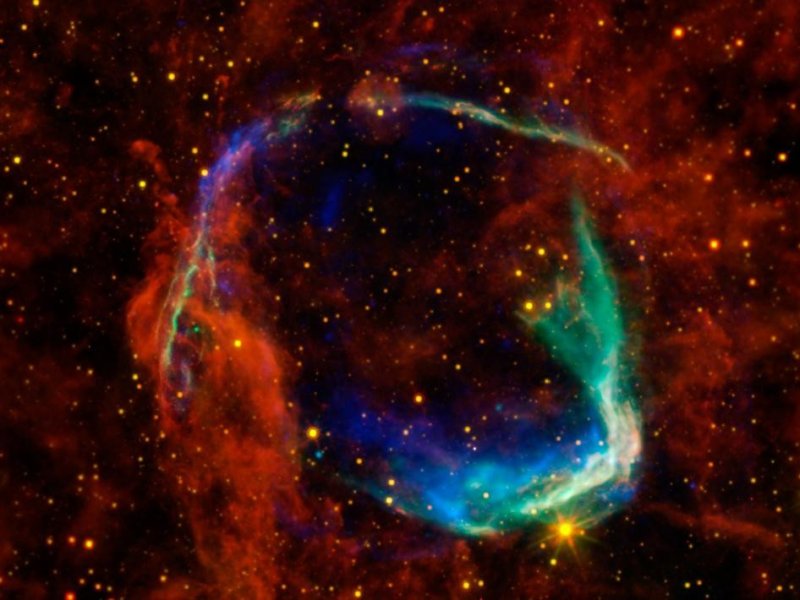This image combines data from four different space telescopes to create a multi-wavelength view of all that remains of the oldest documented example of a supernova, called RCW 86. Credit: NASA/ESA/JPL-Caltech/UCLA/CXC/SAO
RALEIGH, N.C., Oct. 24 (UPI) -- A NASA space telescope has provided evidence why a supernova recorded by observers 2,000 years ago occurred and why it spread so far and fast, astronomers say.
"This supernova remnant got really big, really fast," Brian J. Williams, an astronomer at North Carolina State University in Raleigh, said of the supernova witnessed and recorded by Chinese astronomers two millennia ago.
"It's two to three times bigger than we would expect for a supernova that was witnessed exploding nearly 2,000 years ago. Now, we've been able to finally pinpoint the cause."
New infrared observations from NASA's Spitzer Space Telescope and Wide-field Infrared Survey Explorer, or WISE, show the stellar explosion took place in a hollowed-out cavity, allowing material expelled by the star to travel much faster and farther than expected, a NASA release said Monday.
Astronomers said it began as Type Ia supernova, created by the relatively peaceful death of a star like our sun, which shrank into a dense star called a white dwarf then exploded after siphoning off matter from another nearby star.
"A white dwarf is like a smoking cinder from a burnt-out fire," Williams said. "If you pour gasoline on it, it will explode."
A white dwarf can create a cavity around it before blowing up, astronomers said, which is why the ejected material spread so far, unimpeded by gas and dust.















